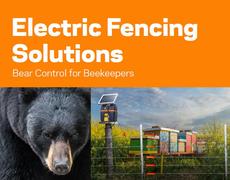Are you looking to take your poultry and livestock husbandry to the next level? Look no further! Dive into a treasure trove of innovative, field-tested equipment that will revolutionize the way you care for your animals. This is not just any ordinary collection – it's a comprehensive guide that offers more than just products.
What Makes This Resource Stand Out?
What sets this resource apart is the wealth of knowledge it provides. It's not just about selling you equipment; it's about empowering you with the information you need to succeed. From detailed "how-tos" that walk you through every step of the process to invaluable tips that can make a real difference, this resource is a game-changer.
Why Practical Fencing Advice Matters
One of the key aspects of poultry and livestock husbandry is proper fencing. Without the right fencing, your animals could be at risk. That's why this resource goes above and beyond by offering practical fencing advice that is easy to implement. Say goodbye to worrying about your animals wandering off or predators getting in – this resource has you covered.
Unleash Your Potential with Tried and Tested Equipment
Imagine having access to equipment that has been tested in the field and proven to deliver results. That's exactly what you'll find in this comprehensive resource. Whether you're looking for feeding systems, housing solutions, or health management tools, you can trust that the equipment featured here is top-notch.
But it's not just about the equipment – it's about the results you can achieve with it. By incorporating these innovative tools into your husbandry practices, you'll be able to optimize your operations, improve the well-being of your animals, and ultimately, enhance your overall success.
Portable and proven, electric netting can be used to contain sheep, goats, poultry and more. It’s effective against predators such as coyotes, stray dogs, bears and foxes.
Take the Next Step Towards Excellence
Don't settle for mediocrity when it comes to caring for your poultry and livestock. Embrace the opportunity to explore a world of possibilities with this ultimate resource. Whether you're a seasoned pro or just starting out, there's something here for everyone.
So, what are you waiting for? Dive in, explore, and elevate your husbandry practices to new heights. The journey to excellence starts here.








